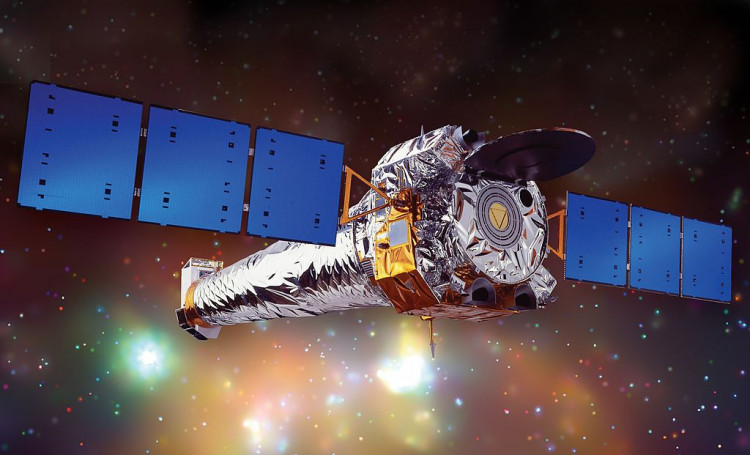The Chandra X-ray Observatory, which has been studying the X-ray universe since 1999, has experienced a power supply failure with its High Resolution Camera equipment, forcing the mission crew to temporarily suspend research operations.
The Chandra X-ray Center's director's office said on Twitter that the space telescope's High Resolution Camera had been "powered down after being discovered in an anomalous state," and that the "cause is currently under investigation."
"Chandra mission specialists have paused science operations and put the four science instruments into safe mode while they analyze the situation and determine the appropriate response," Chandra mission officials wrote in an update today (Feb. 16). "The spacecraft itself is operating normally."
According to the statement, the space telescope is planned to resume normal operations with a different instrument called the Advanced CCD Imaging Spectrograph, or ACIS, by early next week.
Originally intended to last only five years, the Chandra X-ray space telescope has spent more than two decades studying the structure and history of the universe in the X-ray range of the light spectrum. On July 23, 1999, it was launched into orbit aboard the space shuttle Columbia.
The current flaw in Chandra's High Resolution Camera isn't the first. A different anomaly knocked the camera down in August 2020, halting its science operations for months.
In December 2020, Chandra controllers switched the camera to a backup set of electronics and conducted a thorough analysis of the system before restoring it to full health. In 2018, the observatory also experienced a gyroscope issue, which was resolved.
NASA created a series of jaw-dropping photos using Chandra's x-ray data earlier this month. This data was used to create an image of Cassiopeia A, a supernova remnant that reveals "how individual elements from the exploded star are being cast off into space."
Cassiopeia A has a variety of ingredients, as shown by Chandra X-ray data. Red signifies silicon, yellow specks suggest sulfur, green tints indicate calcium, and light purple traces indicate iron.
However, Cassiopeia A isn't the only X-ray NASA released. R Aquarii, a pair of two objects observed by the telescope, includes a white dwarf star and a "highly variable" red giant. The image depicts the two stars orbiting each other, with the white dwarf regularly absorbing material from the red giant and storing it for itself. This ongoing connection finally results in an explosion, as astronomers have seen time and again.
Abell 2597, a galaxy cluster deep in space with a "giant central supermassive black hole" at its center, is also noteworthy. The black hole is pushing gas outward, resulting in huge'space bubbles,' according to NASA. It's a stunning mix of blue, pink, and purple, underscoring Chandra's value.
According to NASA authorities, the Chandra X-ray Observatory is now on an extended mission that is funded until 2025 and could be extended until 2030.






